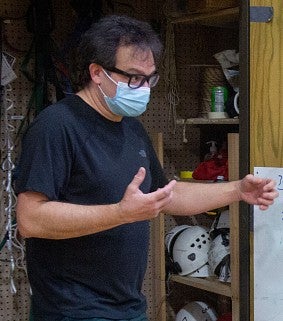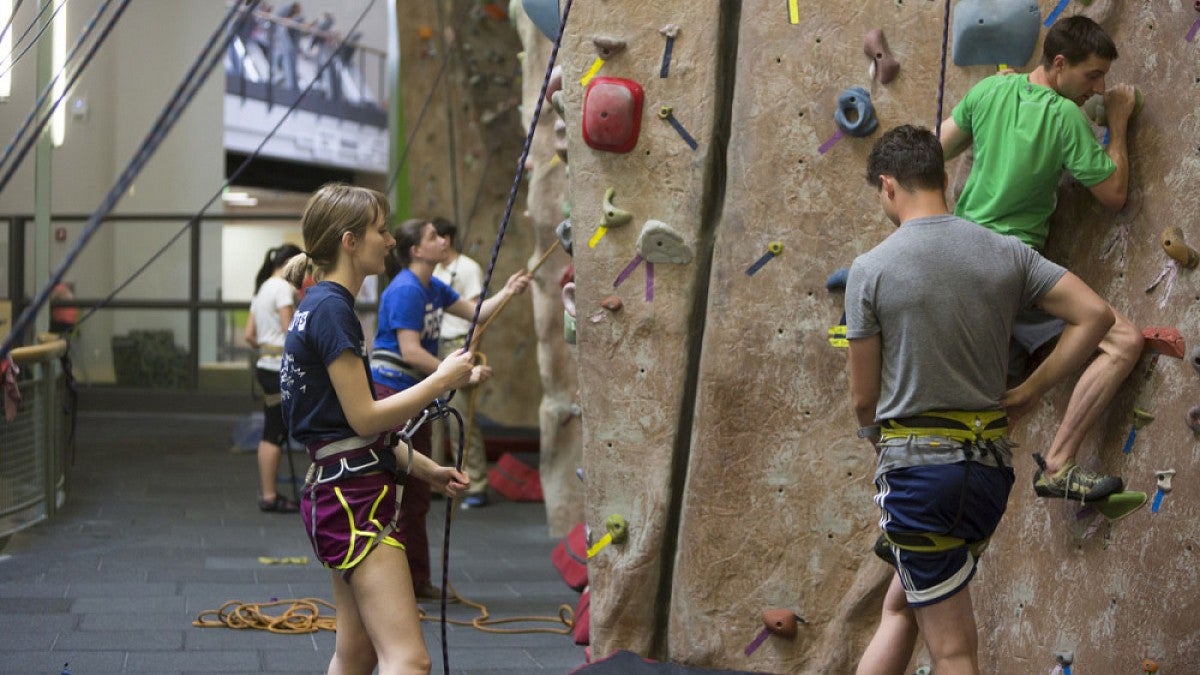The first year Graham Kribs was a faculty member at the University of Oregon, he spent his lunch breaks at the UO Recreation Center taking a rock-climbing course.
The theoretical particle physicist had a passion for the physical sciences, but he also had a passion for physical activity. It wasn’t until almost 15 years later, though, that Kribs was able to combine the two and make a one-of-a-kind class.
After taking a rock-climbing course from Dan Crowe, the assistant director of physical education at the UO, Kribs and Crowe got to chatting about making a class that combined physics and climbing. Crowe emphasized the resources specific to Oregon, such as the Pacific Northwest outdoors and the UO rock climbing walls, and Kribs was even more excited about making a multisubject course.

“It's really about uncovering the science behind how climbing is done, how equipment is designed to meet specifications, and ultimately how to make climbing and related activities as safe as they can be,” Kribs said.
Using spaces in the Rec Center and Gerlinger Annex, Kribs and his students measure the force exerted in various pulley configurations, test the strength of equipment by loading it to the breaking point, and even probe helmet safety using a juicy crash test dummy.
“We put a small watermelon in a helmet as a proxy for the head,” Kribs said. “And again, this is not precise science. This is to get some qualitative understanding of how to think about the role of different helmets and why they're designed the way they are.”
J.D. Merritt, a fourth-year doctoral candidate in physics, is a graduate employee in Kribs’ Science of Climbing course. He said the hands-on aspect of the course is what allows students to engage so deeply with the material.
“I think everyone has an intuitive understanding of physics from their everyday lives, but this makes it so clear that nature really is physics, whether we go through math on a chalkboard or not,” he said.
Although the class has mostly drawn nonmajors, each student leaves the class with a newfound appreciation for the physics behind rock climbing. The math may seem daunting at first, Kribs said, but once an experiment takes place, students become much more engaged.
“It’s fun to watch that transition from default skepticism to a full engagement in the topic,” Kribs said. “And that, I think, is one of the joys of doing this.”
Along with the indoor climbing walls at the Rec Center and Gerlinger Annex, Kribs said the sense of place and culture of outdoor activity in the Pacific Northwest makes courses like his flourish at the UO.
“We're sort of able to fuse two awesome things about Oregon into one,” Kribs said. “We can combine the awesome outdoor pursuits program and what they're able to do with the science side of the College of Arts and Sciences.”
—By Alyson Johnston, College of Arts and Sciences


